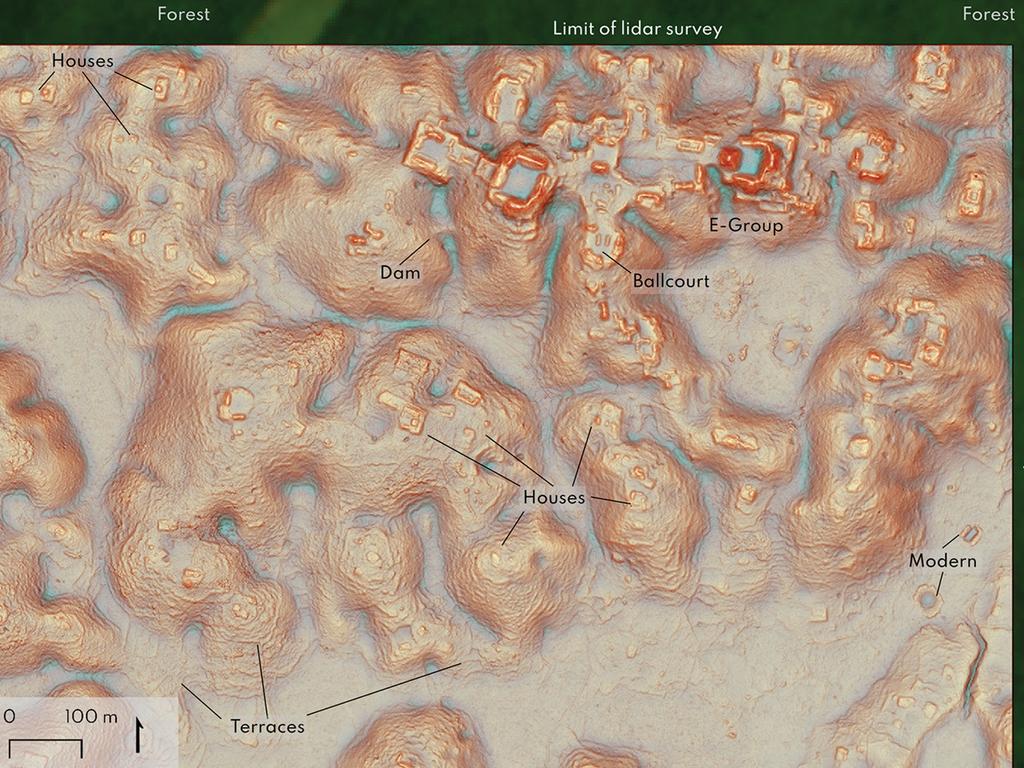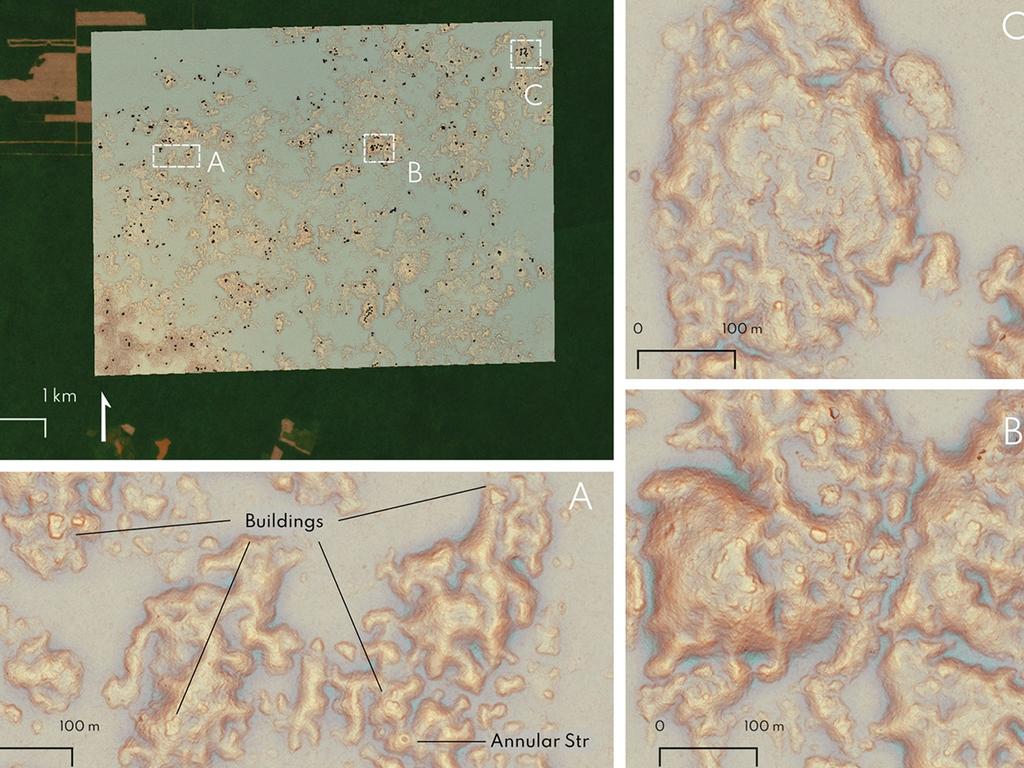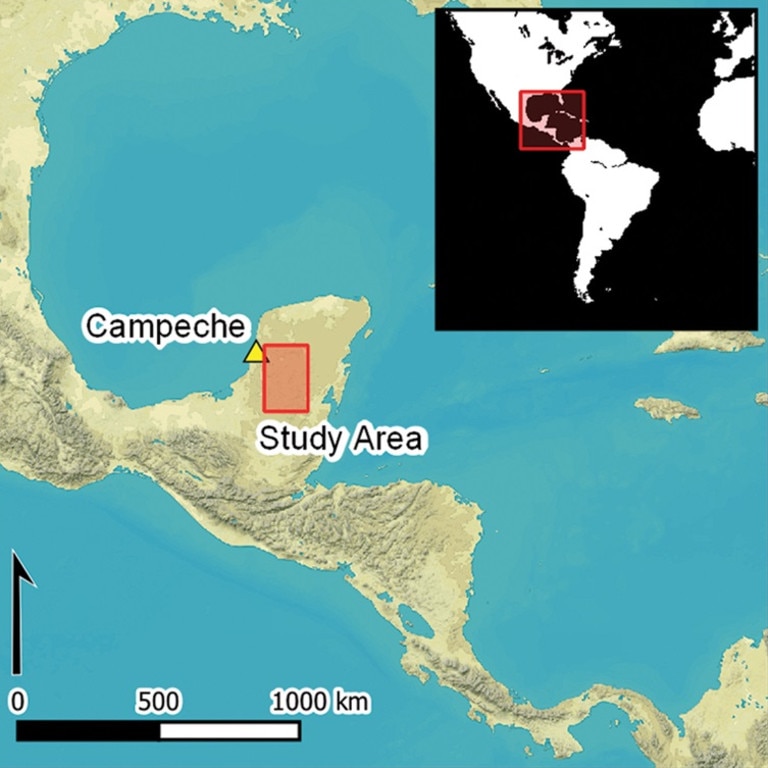Lost Maya city buried ‘in plain sight’ beneath the Mexican jungle
An archaeologist has stumbled upon an ancient city in modern-day Mexico that was buried ‘in plain sight’ for centuries, after unanalysed data from a Google search led to the remarkable find

READING LEVEL: ORANGE
Archaeologists have discovered a huge ancient city hidden in the Mexican jungle while browsing on the internet.
The lost city in the southeastern state of Campeche, home to Belize, El Salvador and Guatemala, was found using the laser mapping technology LIDAR, or light detection and ranging equipment, which maps structures underneath vegetation.
The area was once believed to have been uninhabited by the ancient Maya* civilisation, however a closer look at the data mapped out using LIDAR showed the remains of a large ancient city, complete with pyramids, plazas, amphitheatres* and sport fields.
The city has now been named Valeriana after a nearby lagoon, and was one of three sites located by an archaeologist who was browsing online.

The huge area is believed to be second in density* to Calakmul*, the largest Maya site in ancient Latin America.
Archaeologists reported the find in the journal Antiquity last Tuesday, along with thousands of never-before-seen Maya structures.
Lead study author, archaeologist and PhD student Luke Auld-Thomas from Tulane University in Louisiana, said he found the city while browsing data on the internet.
“I was on something like page 16 of Google search and found a laser survey done by a Mexican organisation for environmental monitoring,” Mr Auld-Thomas told the BBC.

He had stumbled across a LIDAR survey, and when he processed the data from it with methods used by archaeologists, he found something others had missed – the lost city, which is believed to have been home to 30,000 to 50,000 people during its busiest time from 750AD to 850AD.
It was hidden in plain sight all along, being just 15 minutes’ walk from a major road near Xpujil.
The LIDAR scans were collected in 2013 for a forest survey by the Nature Conservancy of Mexico, with the lasers uncovering an area of around 122 km sq.
In total, the researchers uncovered 6,764 structures in Valeriana and in other rural and urban settlements of varying sizes.
“On the one hand it was surprising — you see it and you’re struck by it. On the other hand, it actually confirmed what I expected to find,” Mr Auld-Thomas said of the discovery.

“My own sense of this part of the Maya Lowlands, based on what I know of my archaeology, is that if you could throw darts at it, you would find urban areas. And so it was gratifying and exciting to see that that was actually the case.”
Campeche is located between two well-explored locations – northern Yucatán and the southern Maya Lowlands, however until now it had been ignored and was not easily reachable, study co-author, Tulane University Professor of Anthropology Marcello Canuto, told CNN.
“This is a new dawn for all of us, because we can now see where we would never have been able to see,” Prof Canuto said.
POLL
GLOSSARY
- ancient Maya: the Mesoamerican people native to Southern Mexico, Guatemala and northern Belize, considered one of the greatest civilisations of the Western Hemisphere before the Spanish invasion of Mexico and Central America
- amphitheatres: outdoor theatres, common in ancient Rome, ancient Greece and ancient Maya cities
- density: the number of people living in an area
- Calakmul: a world heritage site, Calakmul is one of the largest and most powerful Maya ancient cities found in the Maya lowlands. Known as “Snake Kingdom”, Calakmul had a population of about 50,000 people during the Classic period (250-900 AD). There are 6750 structures at the site including a 45m tall pyramid
EXTRA READING
800-year-old castle saga solved
Doco queries Captain Cook history
Surprise Ancient Egypt cancer find
QUICK QUIZ
1. What is the name of the imaging technique used to discover the lost city?
2. In which part of Mexico was the city discovered?
3. What is the largest Maya site in ancient Latin America?
4. How does the newly discovered lost city compare?
5. What has the lost city been called?
LISTEN TO THIS STORY
CLASSROOM ACTIVITIES
1. Lost city
How does a city, inhabited by possibly 30,000-50,000 people, get lost and buried under vegetation over a long period of time? Discuss with a classmate and write some possible reasons below:
–
–
–
–
–
Time: allow 20 minutes to complete this activity
Curriculum Links: English, History, Science, Personal and Social, Critical and Creative Thinking
2. Extension
750AD was 1,273 years ago. What might civilisation have looked like then compared to now? Note some of the key areas you are interested in:
–
–
–
Time: allow 10 minutes to complete this activity
Curriculum Links: English, History, Personal and Social, Critical and Creative Thinking
VCOP ACTIVITY
Activity: Starting sentences with a dependent clause
Objective: To practise creating complex sentences by starting with a dependent clause. This helps students understand sentence structure, making their writing more varied and engaging.
Instructions:
Below are simple sentences related to the article about the discovery of the ancient city. Adding a dependent clause at the beginning could make each sentence more engaging. Start each sentence with a dependent clause that gives context, sets a scene, or explains when or where the action occurred.
A dependent clause is a group of words that has a subject and a verb but does not express a complete thought. It often begins with words like “while,” “after,” “because,” “as,” or “although.”
Example:
Simple sentence: Archaeologists discovered an ancient city hidden in the jungle.
Uplevelled sentence: While browsing data on the internet, archaeologists discovered an ancient city hidden in the jungle.
Choose a sentence: Choose one of the simple sentences below, or create your own based on the article.
- Archaeologists used laser technology to find the city.
- The city was once home to thousands of people.
- The discovery confirmed archaeologists’ expectations.
- The ancient city is located in the state of Campeche.
- The area was thought to be uninhabited by the Maya.
Add a dependent clause: Start with a dependent clause that adds detail, such as:
- Before archaeologists began their research …
- After searching through pages of data …
- While exploring an uncharted part of the jungle …
Rewrite the sentence: Combine the dependent clause with the original sentence to create a complex sentence.
Share with a partner (if time allows): Read your sentence aloud to a partner or small group and discuss how the dependent clause adds to the sentence.
Extension (optional):
Try writing another sentence from the article, starting it with a different type of dependent clause. Use phrases like “because,” “even though,” or “as soon as” to add variety to your sentences.

